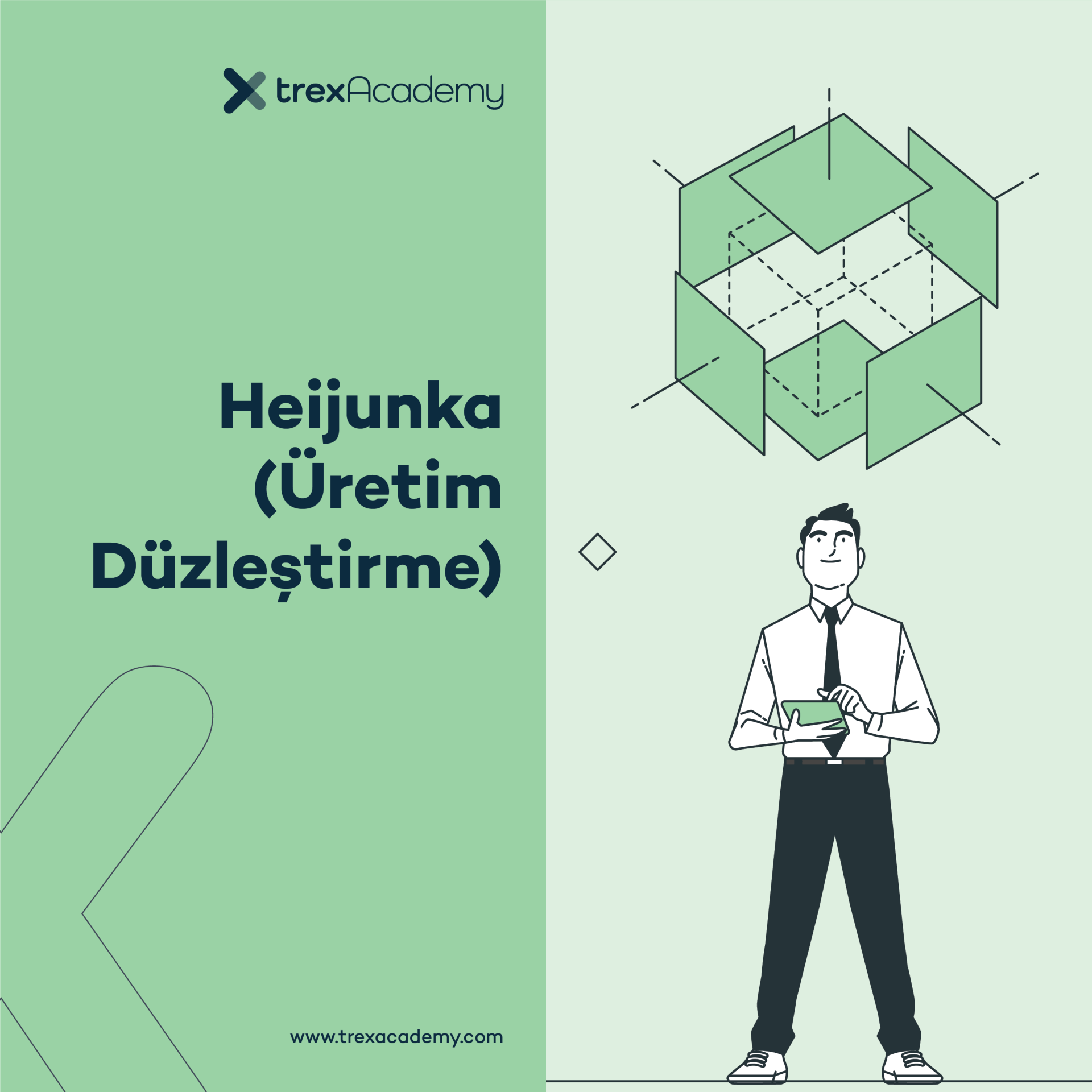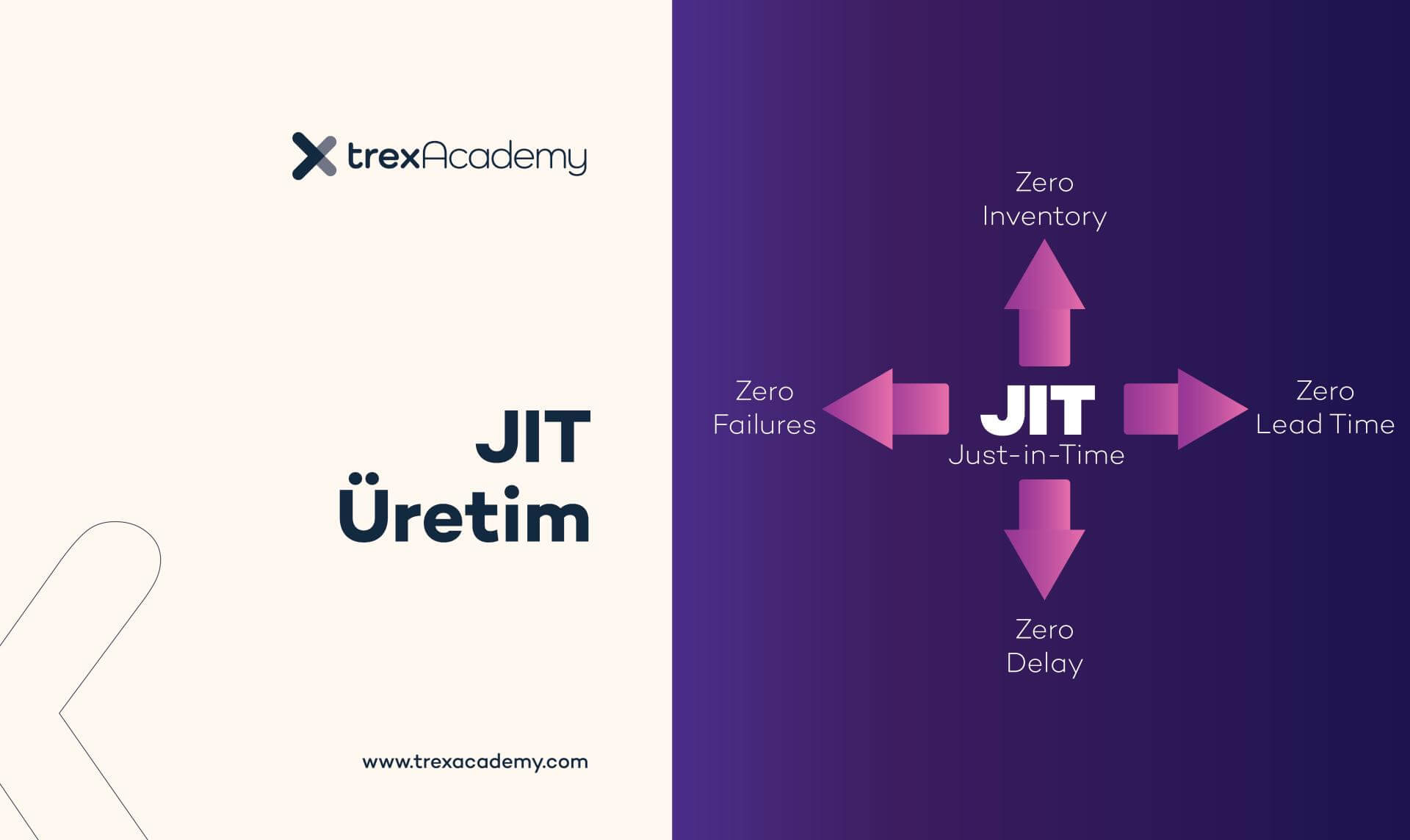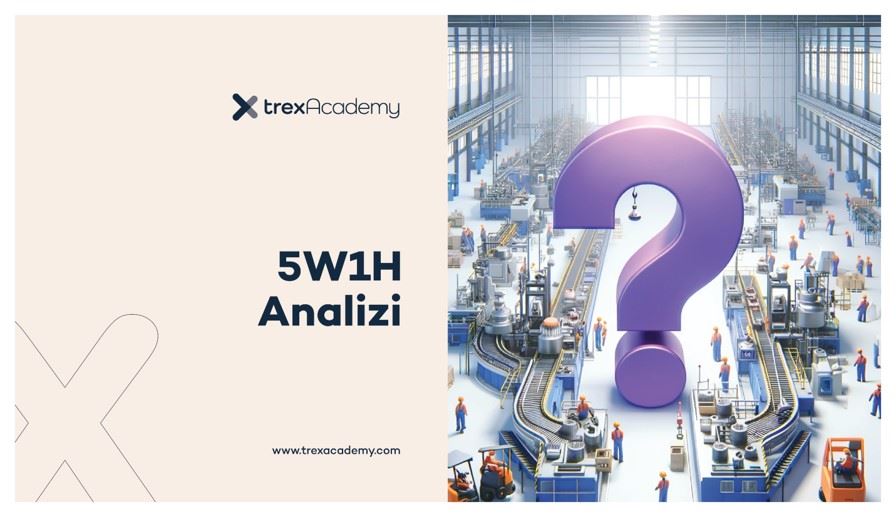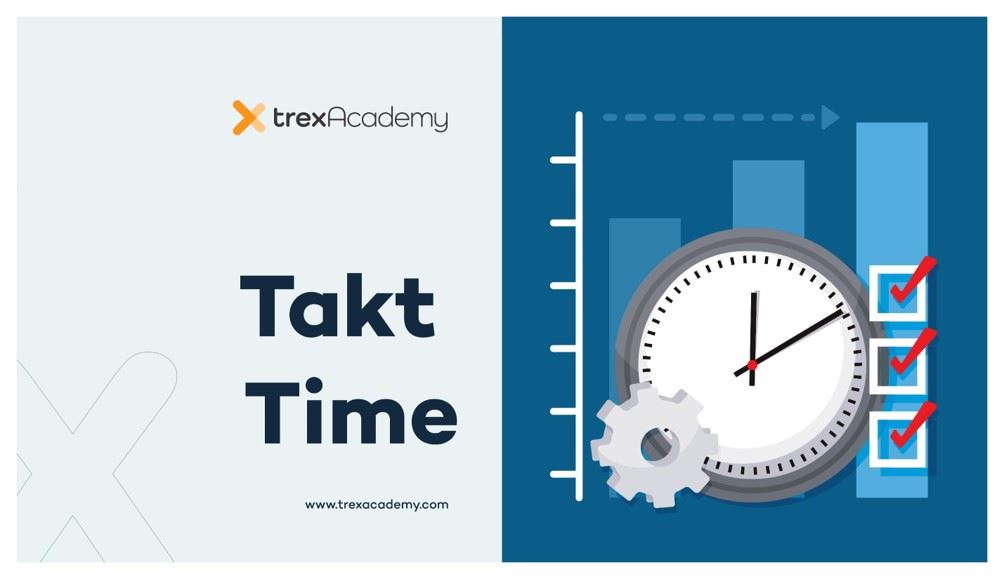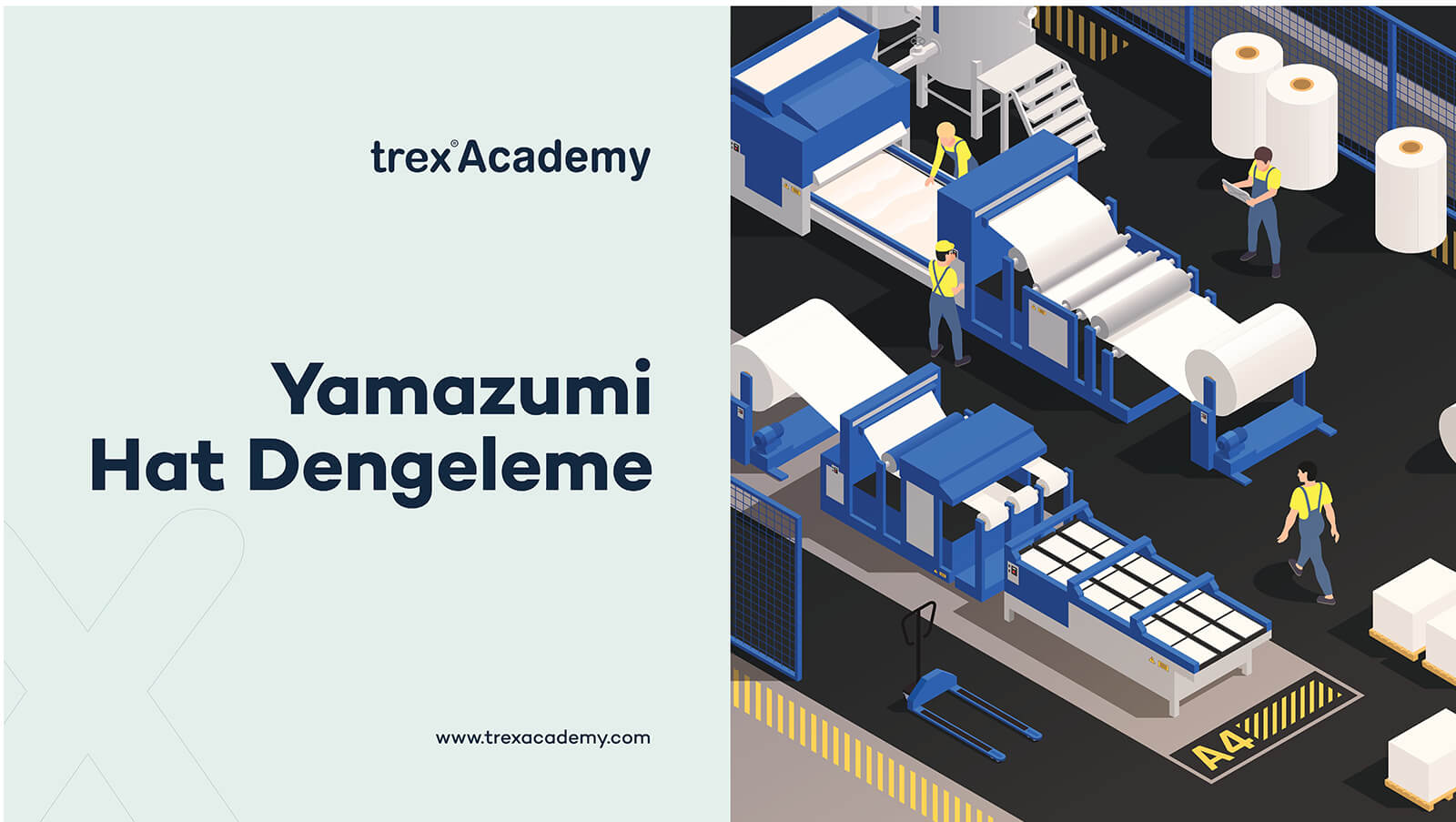Lean Tools
What is 5W1H Analysis? What are the Benefits?
The 5W1H method serves as a compass for businesses that want to make a difference in the manufacturing sector and stand out from the competition. Here are the critical advantages of this method for manufacturing businesses:
Problem Solving: Identify real problems with root cause analysis and produce permanent solutions.
Process Optimization: Streamline your production processes by focusing on 'How' and 'Where'.
Effective Decision Making: Make strategic and effective decisions with 'When' and 'Who' questions.
Customer Satisfaction: Achieve satisfactory results by understanding customer needs correctly.
In short, analyze your production processes in depth with the 5N1K method and take strong steps on your continuous improvement journey.
What is Kanban? What are the Benefits?
In the business world, productivity and workflow management are constantly evolving. In this development, the kanban method plays an important role. Kanban is defined as a visual and flexible work management tool. Used to easily organize and track tasks, it is considered a powerful tool for optimizing business processes.
What is a Spread Diagram?
Spread diagrams are a powerful data analysis tool for businesses. Businesses can plan their future actions by visually tracking changes over time. In this context, scatter diagrams contribute to this process by showing relationships clearly. In addition, businesses can detect exceptional points in data sets and identify problems early. In this context, it increases the efficiency of businesses by increasing data integrity and analysis accuracy. As a result, it helps businesses make data-driven decisions and provides competitive advantage with its advantages such as visualizing relationships, identifying trends, identifying outliers and supporting decision-making processes.
What is Pareto Analysis? What does it do?
Pareto Analysis is a critical tool used by businesses to identify and prioritize the sources of problems and guide continuous improvement processes. This analysis shows that most problems are caused by just a few main factors, so it allows businesses to use their resources in the most effective way. When used correctly, Pareto Analysis helps businesses gain competitive advantage by increasing their efficiency.
What is Fishbone? When and How is it Applied?
A fishbone diagram is a quality control tool used to understand the root causes of a problem. This diagram usually has a structure similar to a fish skeleton. It is stated in the title of the problem and visualized by writing on the fishbones, which are forked under the main categories. This methodology enables a team or organization to approach problems from a systemic perspective. The fishbone diagram gives the Project team the chance to evaluate and understand the problem from different perspectives. By identifying the root causes of the problem, it helps to develop effective solutions to increase quality or improve processes. In this way, organizations can address problems in a more comprehensive way and focus on continuous improvement. The fishbone diagram encourages team collaboration and allows problems to be solved more effectively.
What is a Control Diagram?
Control Diagrams are visual tools used to plan, effectively manage and optimize production processes or systems in detail. These diagrams play a strategic role in ensuring quality control in production processes, minimizing potential errors, making processes more efficient and effective, and ultimately achieving the desired product or service quality.
What is Takt Time? What Does It Do?
Takt Time is an important measure used in business processes to meet customer demands, prevent overproduction and manage the process more effectively. In this way, it helps businesses to use resources more effectively, while at the same time providing a strategy to increase customer satisfaction.
What is OEE (Overall Equipment Efficiency)? Why should we measure it?
OEE (Overall Equipment Efficiency) is a performance measurement method used to measure and improve the efficiency of production processes. OEE is used to assess how effectively and efficiently the equipment in a production facility is operating.
What is Autonomous Care? What does it do?
Where Autonomous Maintenance activities are unknown or not practiced, operators may lack the ability to solve these problems, often when faced with simple failures. The lack of autonomous maintenance can manifest itself by increasing operators' waiting times and causing disruptions to production. The inability of operators to intervene in such minor issues means waiting until maintenance teams can step in. This, in turn, can reduce the efficiency of production processes and lead to inefficient use of resources over time.
What is Yamazumi Line Balancing? What are the Benefits?
Yamazumi balancing is a technique developed within the Toyota Production System (TPS). Its name is a combination of the Japanese words "patch" and "zumi". This technique aims to optimize takt time by distributing the workload on the production line in a balanced way.
The aim is to adjust the work processes at each workstation in a balanced way, thus strengthening the weak links in the production line. It therefore aims to ensure that each workstation is evenly loaded and that the production line runs more efficiently.
How to use the control chart ?
Nothing in nature is the same as the other. This is also one of the important points in production. It is natural that every product produced or its constituent parts vary in terms of quality characteristics. For this reason, systematic and effective control of all processes is vital. The most effective tool used to control a process economically and reliably by statistical methods is control diagrams.
What is SMED? How to Analyze?
SMED (Single-Minute Exchange of Die) is to minimize the product change time in the production line and thus increase productivity. Businesses use it to reduce costs and provide competitive advantage. This technique works in line with the philosophy of continuous improvement (kaizen).
What is Kaizen and How is it Applied?
The Kaizen philosophy is based on principles such as "the best is the enemy of the good" and "good enough is not good enough".
This includes not being satisfied with the current situation and finding and implementing continuous small improvements in the areas for which they are responsible, both within teams and individually within the framework of people. If the current situation is inadequate and wants to be improved, KAIZEN should be applied. This basic structure leads to continuous improvement. Continuous improvement is a process-based effort to seek continuous improvement by sharing information in small steps.
The Importance of Kaizen in Production-Oriented Businesses
Kaizen means "change for the better" in Japanese. This concept is an important tool to ensure the development and efficiency of our businesses. However, before starting improvements, it is necessary to identify losses. There are three basic types of losses: Downtime Losses, Performance Losses and Quality Losses. It is important to measure these losses before starting improvements.
Place and Importance of Project Management in Organizations
A 'project' is a set of systematic studies with a specific subject, product or service output, which has a start and end date with a purpose, target and budget, and is implemented with the understanding of creating change on its basis. Project management, on the other hand, includes managing, executing, reporting the project skeleton structure, implementing it in accordance with the standards and turning it into the scope and project document requested by the auditors. Within the information scope of project management, there are comprehensive processes ranging from management, communication, budget, predictable risk and quality, stakeholders, integration management, human resources, procurement and time management processes. It is important that these processes are managed by the right people and with the right team, and that they are digitally recorded and tracked.
OEE ( Overall Equipment Effectiveness)
The term OEE, which stands for "Overall Equipment Effectiveness", is translated into Turkish as "Total Equipment Effectiveness". For companies using the Production Data Collection System, the OEE value is the most decisive indicator. The average OEE value of a machine and/or the total production area gives an idea of "how production is going" in a snap.










